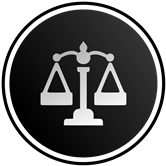Updated on November 01, 2025 05:33:18 PM
Trademark Objection is a legal notice that is sent by the Registrar. TM Objection is the initial stage of Trademark Registration. This process may occur when the examiner raises an issue regarding the similarity of the existing registered trademark.
Trademark Objection helps to protect the sole rights of the existing mark. It also prevents confusion that may occur due to similarity and can harm a particular brand’s reputation in future. Therefore the examiner raises the trademark objection at the initial stages which also aids to reduce the chance of opposition in future. In this article, we will clear all the necessary information regarding the trademark objection process, purpose and reason, which can help you to get TM registration easily.
![TM-Objection[Sample]](../images/Objection Sample.webp)
Section 9(1)(B) of the Trademark Act,1999 permits the Registrar to raise objections. According to this section if the applicant applied the mark which indicates the kind, quality, quantity, value, geographic origin or time of production of the goods or service may raise an objection.
After filing the trademark application, it goes for examination by the Controller General of Patent, Design and Trademark (CGPDTM). If the examiner finds any issue that can cause confusion in future so they can mark the application as objected. Raising an objection doesn’t consider rejection. The main purpose of Trademark Objection is to conduct fair competition in the marketplace and prevent confusion.
Trademark objection will conduct in several steps that are mentioned below:
When the registrar raises an objection to the applied trademark, a receipt is sent to the applicant. In this examination report the applicant gets to know the ground of the objection of their trademark. The applicant or the TM attorney has to review the trademark and has to file a reply in their favour.
After receiving the notification of the objective trademark, the applicant has to file an MIS-R within 30 days of the notification. If the examiner doesn’t get any reply to the objection, the application may be marked as abandoned.
In this stage, the applicant has to submit all the favourable documents attached to their MIS-R. The supportive document can include the bills, the applicant’s website, social media advertisements or e-commerce sites. These documents help to prove the applicant is a prior user.
When the examiner gets the reply, they conduct a Trademark show cause hearing. The examiner will get three chances of the hearing if the applicant is not present at these hearings the application will be abandoned.
At the Show Cause Hearing, if the examiner will get satisfied with the proof they publish the trademark in the journal otherwise they will reject the application.
After the advertising in the journal, any individual or business has any issue regarding the applied trademark so they can file trademark opposition. The main purpose of this opposition process is to prevent the confusion that can cause due to the similar mark and can harm the goodwill of a brand.
After completing all the aforementioned steps, if the applicant doesn’t get any opposition the applied trademark will be registered and the applicant can start using the trademark symbol ® in front of their logo. Otherwise, the applied trademark will be rejected.
There are several purposes of the trademark objection, some of these are given below:
There are two reasons mentioned below when the applicant will have to suffer with the Trademark Objection process.
By following the below points, the applicant can avoid the trademark objection process:
Trademark Objection is the main and initial process of TM registration, where the registrar has complete rights to raise an objection. The TM Objection process is one of the main processes that secure insecurity regarding the infringement. This process also concludes many steps such as getting notification of objection, replying to the objection, show cause hearing, advertising in the journal and registration.
However, the applicant doesn’t want to suffer with this process. TM Objection creates a high chance of being rejected the applied trademark at the initial stage therefore the applicant must consult with the TM attorney. They must also avoid some points that can cause this process such as filing incomplete information and choosing a similar kind of mark that has already been registered
The procedure of trademark registration is lengthy procedure, and there is a higher probability of objection. Here, "Litem Legalis" will assist you in obtaining your TM registration in a quicker and more straight forward manner. Your best option is "Litem Legalis" because:

Legal Consultation

Expert Lawyers

Lowest Fees

Quick Process
Trademark Objection is a legal process and initial stage of TM Registration. This objection raises by the examiner during the process of Trademark examination.
TM Objection raises by the registrar and TM opposition is raised by any individual or business. This is the main difference between TM objection and TM opposition.
Some common reasons include similarity to existing trademarks, descriptive or generic terms, incomplete information, or the use of prohibited symbols or words.
You can avoid objections by conducting a thorough trademark search, choosing a unique and distinctive name, and ensuring all required documents and details are accurately filed.
Disclaimer: The content provided on this site is intended for informational purposes only. Accessing or utilizing this site and its materials does not establish an attorney-client relationship. The information contained herein does not constitute legal or professional advice and should not be relied upon as such. It is not a substitute for obtaining legal counsel from a qualified attorney licensed in your jurisdiction